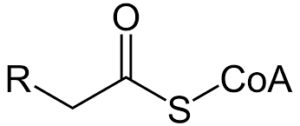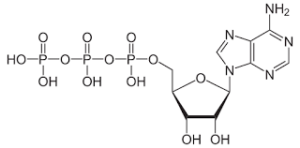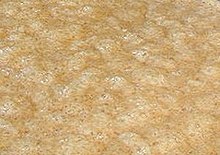Krebs cycle is also called to be citric acid cycle or the TCA cycle that helps in making two of the carbon dioxide molecules.
The Krebs cycle steps include a chain of reactions with reduced form of NADH and FADH2. The Krebs cycle steps including the phases like condensation, isomerization, oxidative decarboxylations and oxidative decarboxylation.
There are four of the carbon molecule that is involved, oxaloacetate that helps start the cycle and is regenerated after all the eight steps of the citric acid cycle is done. The Krebs cycle steps is a chain of hydration, decarboxylation, redox and dehydration reactions. All of the enzymes involved in the Krebs cycle steps are soluble.
Each of the turn in the cycle is made to form one ATP or one GTP as well with other three NADH molecules and one FADH2 molecules is further on used up in the Krebs cycle steps for the method of cellular respiration to make ATP for all the cells. It in simple term is a chain of reaction that is chemical by nature and done by aerobic organism.

The Krebs Cycle can also be called the Citric Acid Cycle (CAC) or the Tricarboxylic Acid (TCA) Cycle. This cycle takes place in the Mitochondrial matrix and is the primary step of aerobic processing within a cell. The process oxidises glucose derivatives, fatty acids and amino acids to carbon dioxide (CO2) through a series of enzyme controlled steps.
The citric acid cycle keeps in the generation of energy along with having acetate oxidized and derived from fats, proteins, carbohydrates, proteins into the carbon dioxide. On the other hand, with being the same, Krebs cycle steps include the mechanism for oxidative analysis for acetyl units and then serves as the basic source for cellular energy.
There is a conversation of acetyl CoA, the Krebs cycle steps is seen in the matrix of mitochondria. In cellular biology, the mitochondria are an organelle that has a membrane which is often said to be the power house of the cell and also said to be cellular power plants as they are used up to make the maximum amount of ATP.
Cellular respiration Krebs cycle steps
There is only one enzyme for the Krebs cycle steps that is insoluble being the succinate dehydrogenase that is embedded inside the mitochondria.
The process of Krebs cycle steps includes 8 of the phases. Not like glycolysis, this cycle is not an open loop with the last stage of the path being regeneration of a compound that is used in the start step.
The eight of the steps are a complete chain of all the reactions that is possible and generates molecules of two carbon dioxide, NADH and FADH2, GTP or ATP. This pathway is said to be an aerobic one as the FADH2 and NADH is made and shall transfer the electrons to the next path in its system that makes the use of the gas oxygen.

Glycolysis produces pyruvate which, under aerobic conditions, gets moved into the mitochondria via a carrier protein within the membrane. There it is oxidatively decarboxylated by a huge enzyme complex called the pyruvate dehydrogenase complex. This reaction is irreversible and requires coenzyme A as well as producing 1 CO2 and picks up two electrons by NAD.
The process of Krebs cycle steps includes-
Step 1
The very first phase of the Krebs cycle steps include the step for condensation that help combine the group of two-carbon acetyls.
This two carbon group is derived from the acetyl CoA that is linked with the oxaloacetate having four of the carbon molecule to make a molecule of citrate that has six carbon molecule.
CoA is said to link to a group called sulfhydryl and then makes it way to diffuse away that links eventually with the other group of acetyl. This process is said to be irreversible and the reason being is that it is too exergonic. The reaction rate for this step is observed by the not so positive feedback and the availability of the amount of ATP.

There is an increase in the level of ATP with a decrease in the rate of the reaction. Along with working for many steps this reaction releases their molecules of NAD which are reduced to NADH. There is never a short of any reactants that shall be a hindrance to have a run. This cycle helps in making of energy that is used up by the cells.
Step 2
Citrate is said to be tricarboxylic acid and is derived from the group of three of the carboxyl group of the citric acid.
Citrate seems to lose one of the molecule of water and on the other hand also gains another as the citrate is converted to its isomeric form called isocitrate. Thus with the involvement of citrate, Krebs cycle steps completes its second phase.
In the second reaction of the Krebs cycle, the isomerisation of citrate to isocitrate takes place. As an intermediate, cis-aconitate is formed. Therefore, it is a two-step reaction sequence. The Krebs cycle is the second stage of cellular respiration. During the Krebs cycle, energy stored in pyruvate is transferred to NADH and FADH2, and some ATP is produced.
Once citrate has formed, the citrate then goes on to step 2 in which it is transformed into an isomer molecule called isocitrate. This step is carried out in two different reactions; a dehydrolysis reaction followed by a hydrolysis reaction. citrate is too stable for the reactions that follow. So, the Acontiase links to the Citrate to move one of its oxygen atoms to create a more unstable citrate isomer.

The compound citrate has its role in the fundamental metabolisms. It is the anion citrate and the acid of tricarboxylic and also a conjugate base of the compound citrate and the conjugate acid of citrate. This compound citrate is used to make the urine in the blood less acidic or alkaline. This helps in the prevention of developing stones in kidney.
Step 3 and 4
In this phase of Krebs cycle steps, there is an involvement of oxidization for the isocitrate that makes a carbon molecule.
The compound isocitrate when is oxidized forms a molecule of carbon that has five carbons in it. It also has an alpha ketoglutarate along with a molecule of carbon dioxide and two of the electrons.
The release of two of the electrons that is released are reduced from NAD to NADH. This steps are made to regulate via the negative feedback from the adenosine triphosphate and NADH and also effected by the positive outcome of the ADP. The third and fourth Krebs cycle steps consists of both the decarboxylation and oxidation steps.
This helps in the release of the electron that help in getting the NAD reduced to NADH and also helps release the group of carboxyl that makes molecules of carbon dioxide. The product of the third phase in the Krebs cycle steps is alpha ketoglutarate and a group of succinyl is made from the phase four of the Krebs cycle steps.
CoA seems to bind with the product of the step 4 which is the succinyl group to make succinyl CoA. The enzyme that this cycle uses is all independent of each other and available all the time and thus an enzyme is sued to work out the step 4 and thus is determined by a feedback which is inhibiter of ATP, NADH and also succinyl CoA.
Step 5
Any group of phosphate is said to be a substitute for the coenzyme A and has a good bond with high energy made for itself.
The energy that is made is used up at the level of substrate phosphorylation. It is at the time of having the succinyl group converted to succinate. This is done for either of the two reasons- to form either adenine triphosphate or guanine triphosphate.
The reaction of succinyl-CoA to succinate (see figure) proceeds via the intermediate succinyl phosphate. In the first step, the coenzyme A, which is located at the succinyl group, is substituted by a hydrogen phosphate ion Succinyl phosphate remains bound in the enzyme an dis therefore not released. In the second step, succinyl phosphate transfers its phosphoric acid residue on guanosine diphosphate.
There are enzymes seen and are typically of two types called the isoenzymes for this phase of Krebs cycle steps. This step depends on the type of tissue used mostly been animal tissue that is found. One of the form is seen in the tissue that have large amounts of adenosine triphosphate just like in the skeletal muscle and the heart. GTP and ATP can be converted into each other by the enzyme nucleosiddiphosphatkinase.

The form seen inside the tissue is said to make ATP. The form that is second for the enzymes is seen in the tissue that have mote number of pathways that are anabolic in its nature just like in the liver. This from is said to make GTP. ATP and GTP is basically said to be equal in terms of its energy with also its use being much restricted. The method of protein synthesis sues up GTP.
Step 6
This phase in the Krebs cycle step is said to the process of dehydration and helps in the conversion of a compound called succinate to fumarate.
It consists of the transfer of two types of hydrogen atoms into FAD that makes FADH2. There is energy stored in the electrons and this energy kept in the atoms is not enough to get NAD reduced but is more than enough to have FAD reduced.
With not quite likely for NADH, the career shall stay attached to the enzymes and help in the transfer of electrons to have the electrons chain directly transferred up. This method is seemingly easy for work out with by the enzyme that is localized in the step within the inner membrane of the matrix of the mitochondria.

With the carbons removed, the rearrangement process begins manipulating the hydrogen. When the Succinate dehydrogenase links to the substrate, it releases two hydrogen atoms attaching them to a carrier, ubiquinone (Q), or FAD Flavin adenine dinucleotide. With the additional 2 electrons ubiquinone forms ubiquinol being QH2 or FADH2 which is then transferred to power the electron transport chain.
Step 7
Water is said to be added to the fumarate at the 7th phase of the Krebs cycle steps along with the generation of malate.
The last and final stage of the Krebs cycle steps include the once again production of oxaloacetate by having malate oxidized. There is another molecule that is made called the NADH.
Two of the carbon atoms enter this cycle from the acetyl group that represents the four out of six carbons of the one molecule of glucose. There is a release of two carbon molecule with not needed for the carbo atoms to be carried. The atoms of acetyl carbon which are two in number shall be release later on with the original ones stays incorporated.
The overall is given by Acetyl CoA + 3NAD+ + FAD + GDP + Pi + H20
gives 2CO2 + 3NADH + FADH2 + GTP + CoA + 2H+

Finally, the Malate dehydrogenase recreates the Oxaloacetate substrate and moves electrons from the NAD+ to form NADH, the last energy produced by the Krebs cycle. Interestingly, this Malate–Oxaloacetate reaction is also used to move anaerobic energy from the cytoplasm into the mitochondria. While anaerobic reactions produce NADH, it cannot move from the cytoplasm to the mitochondria.
Krebs cycle vs fermentation
Both anaerobic respiration and fermentation are the two type of cell respiration methods that are use up for making of ATP for cell function.
Fermentation is the process that begins with the method of glycolysis but yet has no involvement of any steps of aerobic respiration unlike Krebs cycle and oxidative phosphorylation.
Fermentation is a metabolic process that produces chemical changes in organic substrates through the action of enzymes. In biochemistry, it is narrowly defined as the extraction of energy from carbohydrates in the absence of oxygen. In food production, it may more broadly refer to any process in which the activity of microorganisms brings about a desirable change to a foodstuff or beverage. The science of fermentation is known as zymology.

Both of the methods are made to function in without the use of oxygen gas. They use the hexose sugar as a form of substrate. This hexose sugar is said to first undergo the method of glycolysis. The ultimate difference for the two processes is that fermentation seems to not use the Krebs cycle and the electron transport chain while the anaerobic process makes the use of citric cycle.
Krebs cycle vs Ketosis
The time that the cell needs fuel, it shall pull up the ketone body from the blood and then turn in back into else.
After pulling up of ketone body and converting it to acetyl CoA it is transported via the method of Krebs cycle whet they make up energy in the form of ATP. The brain in quite fond of ketones that shall be increasing on along with keto diet.
Ketosis is the process that takes place when the body is not able to make carbohydrates enough to burn the energy down. Instead of it bringing out things called ketones and fats that shall help as aa fuel. Ketosis is the process that is mostly uses for Weight loss or the diabetic ones.
Ketosis happens when your carbohydrate intake is low. As your body breaks down fat, it produces an acid called ketones or ketone bodies, which becomes your body and brain’s main source of energy. Because ketosis shifts your metabolism and relies on fat for energy, your body can burn fat at a higher rate. In general, it should take you 2–4 days to enter ketosis. However, some people may find they need a week or longer.
Also Read:
- Carbon cycle
- Cellular respiration cycle
- Krebs cycle function
- Nitrogen cycle steps
- Water cycle
- Does the krebs cycle produce water
- Carbon cycle steps
- Is krebs cycle part of photosynthesis
- Rock cycle process
- Rock cycle
I am Ankita Chattopadhyay from Kharagpur. I have completed my B. Tech in Biotechnology from Amity University Kolkata. I am a Subject Matter Expert in Biotechnology. I have been keen in writing articles and also interested in Literature with having my writing published in a Biotech website and a book respectively. Along with these, I am also a Hodophile, a Cinephile and a foodie.